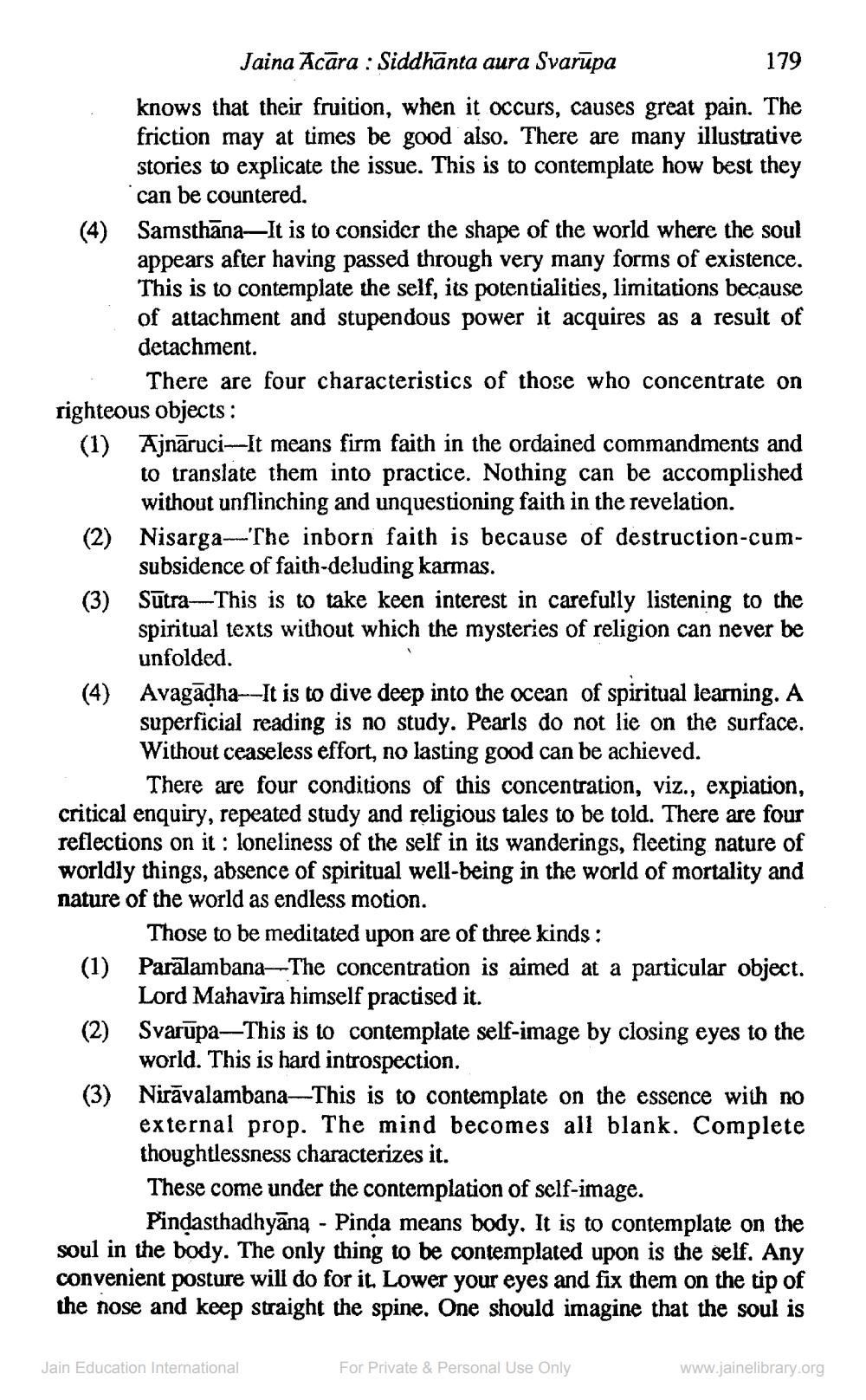________________
Jaina Acāra : Siddhanta aura Svarupa
179 knows that their fruition, when it occurs, causes great pain. The friction may at times be good also. There are many illustrative stories to explicate the issue. This is to contemplate how best they can be countered. Samsthāna— It is to consider the shape of the world where the soul appears after having passed through very many forms of existence. This is to contemplate the self, its potentialities, limitations because of attachment and stupendous power it acquires as a result of detachment.
There are four characteristics of those who concentrate on righteous objects : (1) Ajnāruci-It means firm faith in the ordained commandments and
to translate them into practice. Nothing can be accomplished
without unflinching and unquestioning faith in the revelation. (2) Nisarga---The inborn faith is because of destruction-cum
subsidence of faith-deluding karmas. Sūtra-This is to take keen interest in carefully listening to the spiritual texts without which the mysteries of religion can never be
unfolded. (4) Avagādha--It is to dive deep into the ocean of spiritual learning. A
superficial reading is no study. Pearls do not lie on the surface. Without ceaseless effort, no lasting good can be achieved.
There are four conditions of this concentration, viz., expiation, critical enquiry, repeated study and religious tales to be told. There are four reflections on it : loneliness of the self in its wanderings, fleeting nature of worldly things, absence of spiritual well-being in the world of mortality and nature of the world as endless motion.
Those to be meditated upon are of three kinds : (1) Parālambana-The concentration is aimed at a particular object.
Lord Mahavīra himself practised it. (2) Svarūpa—This is to contemplate self-image by closing eyes to the
world. This is hard introspection. Nirāvalambana-This is to contemplate on the essence with no external prop. The mind becomes all blank. Complete thoughtlessness characterizes it.
These come under the contemplation of self-image.
Pindasthadhyāna - Pinda means body. It is to contemplate on the soul in the body. The only thing to be contemplated upon is the self, Any convenient posture will do for it. Lower your eyes and fix them on the tip of the nose and keep straight the spine. One should imagine that the soul is
Jain Education International
For Private & Personal Use Only
www.jainelibrary.org
www




